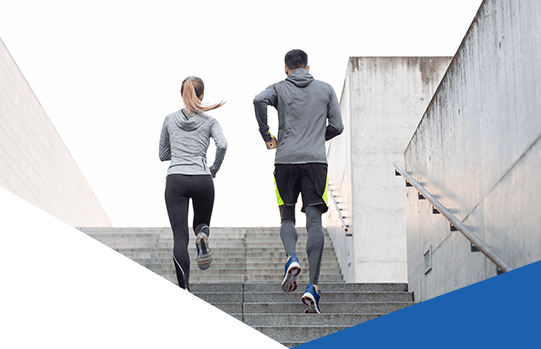Physiotherapy is a proven way to relieve aches and pains. Whether the pain is a result of a day-to-day activity or stemming from a traumatic event such as an injury or surgery, physiotherapists are experts in identifying the appropriate techniques for pain relief that can be catered to a patient’s current situation. However, many people don’t know what to expect from physiotherapy and how a treatment session can help with their pain, and therefore, this article will describe three common ways that physiotherapy can be used to treat pain.

Physiotherapy treatment
Optimizing Movement
Everyone is unique, and as such, it can be expected that people will have subtle differences in the way they move. This is a normal part of human variability, but when deviations to our movement patterns cause pain, these deviations can be identified and addressed in order to reduce pain and improve the overall quality of life.
Rather than simply being instructed to “change the way you move”, a physiotherapist will utilize their biomechanical skillset to identify specific components of your movement that are the source of aches and pains. For example, a muscular imbalance that has gone undetected and is causing pain can be corrected through specific, yet practical, strengthening and mobility exercises that provide you with the ability to have control over your pain. These exercises are catered to your current situation, lifestyle, and most importantly, your goals when it comes to physiotherapy. The exercise component of physiotherapy can be performed in the clinic with hands-on support from your physiotherapist, and can also be continued on your own at home to further assist in a speedy recovery. Your physiotherapist can support you along the way, ensuring you are happy with the program and providing any adjustments accordingly.
Another common example of using an exercise program to help with the reduction of pain is post-surgical rehabilitation. When an individual is healing from surgery, they may experience pain with certain movements or tasks, and given that follow-ups with surgeons can be few and far between, it is understandable that many of these individuals don’t know what movements are safe, what movements are helpful, and what movements to avoid. In this case, a physiotherapist can assess your condition and provide you with the guidance you need to safely and effectively recover from your surgery. In this case, an exercise program may be developed to increase your overall level of function while simultaneously treating your pain in the process.
Along with the exercise prescription itself, a physiotherapist will educate you on your current condition and how the selected activity-based treatment will alleviate your aches and pains, which ultimately provides peace of mind by providing an understanding of the direct link between your pain and the exercises selected. Furthermore, rather than simply being a patient, you are considered a member of the care team with the ability to steer your treatment in directions that suit you most, and patients often find they become empowered by this approach.
All this said, while physiotherapists are certainly experts in fitness appraisal and exercise prescription, what if you need more than diagnosis, education, and activity-based treatment? This brings us to other aspects of physiotherapy treatment that can be used to further assist in the reduction of pain.
Manual Therapy
Physiotherapists are keen to provide you with the tools you need to take control of your pain, but for many individuals, extra assistance along the way is needed. Manual therapy, or “hands-on” treatment, can be an important component of a physiotherapy treatment session to facilitate your overall recovery. Manual therapy can take many forms, including, but not limited to the following:
- Myofascial stretching.
- Soft tissue release.
- Active release techniques.
- Joint mobilizations and/or manipulations.
- Passive or active-assisted range of motion.
- Intramuscular stimulation (IMS), also known as trigger point dry needling.
The physiotherapist may utilize one or multiple techniques with the goal of safely and effectively speeding up your recovery. Additionally, as with the home exercise programs, the physiotherapist can also educate you on these particular techniques, providing you with the comfort of knowing your time spent in the clinic is being optimized for your specific needs. Even a single technique can be adjusted to serve multiple purposes. For example, joint mobilizations administered by the physiotherapist can be used to treat pain, or adjusted such that the primary purpose is to increase the motion of that joint in a particular direction. In any case, a physiotherapist’s expertise in clinical reasoning will ensure that the optimal manual therapy treatment is selected for your needs.
Electrotherapeutic Modalities
Electrotherapeutic modalities, often more simply referred to as “modalities”, can also be a component of your physiotherapy treatment that will help treat your pain. These include, but are not limited to, the following:
- TENS (Transcutaneous Electrical Nerve Stimulation)
- IFC (Interferential Current)
- Electro-acupuncture
- Ultrasound
- Low-Level Laser Therapy (LLLT)
- Shockwave Therapy
- Shortwave Diathermy (SWD)
Physiotherapists are trained experts in when and how to apply these modalities for various conditions, and what the most effective way to reduce pain will be when applying these interventions. Depending on your condition, they may be a minimal part of your physiotherapy treatment, or they may be used more frequently, which will depend on your level of pain and the determined importance of using these tools. In any case, you will be educated on the risks and benefits of any proposed modality, allowing you to have a say in the amount that these techniques are used. For example, some people prefer receiving certain modalities more in the early stages of an injury in order to help relieve their pain more quickly, while others like to push themselves with activity-based treatment and finish the session with a modality to minimize or prevent the onset of any soreness. In any case, these modalities can serve multiple purposes, and your physiotherapist can provide advice about what the most appropriate modality would be, and when/how it should be used.
Summary
This article discussed three common ways that physiotherapy can be used to treat aches and pain caused by a variety of injuries or surgeries, but it is important to note that these do not represent the entirety of physiotherapy. A fundamental tenet in the world of physiotherapy is the acknowledgement that a patient is a unique individual, and therefore, a one-size-fits-all approach is disregarded in favour of considering the unique aspects of the individual’s condition. If you have questions about alternative ways to help relieve your pain or questions about what to expect in physiotherapy treatment sessions, please inquire with your local physiotherapy clinic about what they recommend for your specific needs.





